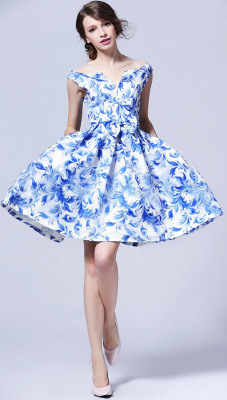What color stockings should I wear with a floral print dress to a summer wedding?



A summer wedding is so romantic and is perfect for a floral print dress. Choosing the right color of stockings seems to be difficult for almost everyone today. Some summer months can be very hot and humid, so if you have good-looking, tanned legs it is perfectly alright and might be better, to go without stockings. However, stockings will give you a more polished look at a summer wedding.
With a floral print dress you can wear ultra, ultra-sheer nude-colored or neutral (flesh) colored stockings. In the fall or winter, a floral dress that has a lot of black can be worn with ultra-sheer black stockings. Avoid wearing stockings with patterns or fishnets. Your floral print dress makes a statement and one statement in every outfit is enough.
Tip: You can go with or without stockings with closed toe footwear.
Read More:
What color shoes & accessories look best with white outfits? White outfits are like blank canvases. You have an infinite number of options when it comes to shoe color and accessories. My preference for shoe colors are neutral colors or light colors such as white, bone, beige, nude or metallics. They look great with all-white outfits. Then you have many options when it comes to accessories and jewelry. Choose colors that flatter you when picking out accessories. However white outfits work with colored, black or printed shoes also but they will call attention to your feet and legs. When accessorizing colored or print shoes you can pick up the shoe color in your bag and /or jewelry. Stick to two colors with white for example the woman in the photo below is wearing turquoise accessories but has a different color bag.
What is the difference between fresh & saltwater pearls? Saltwater pearls are grown in oceans. They are created in oysters and include Akoya, found in places such as Japan, China, Vietnam, etc., South Sea pearls, and Tahitian pearls found in waters of French Polynesia. Freshwater pearls are created in mussels in lakes and rivers and today come mostly from China.
